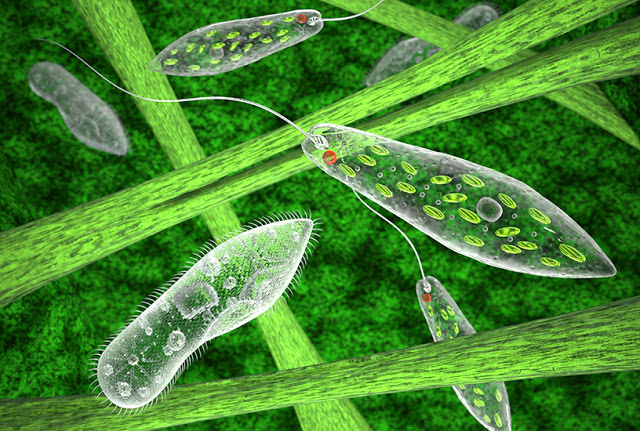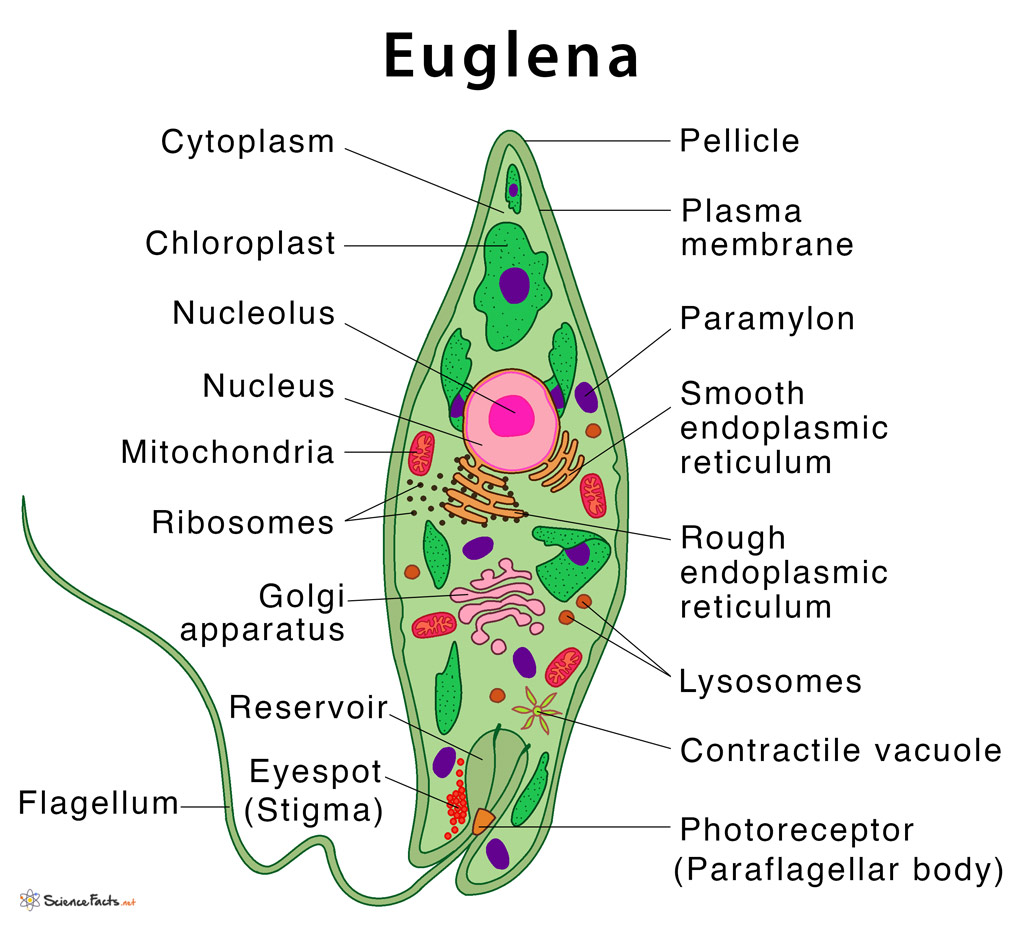Unlike the photosynthetic group, there is a parasitic group of Euglena that causes serious blood and tissue diseases such as African sleeping sickness and leishmaniasis in humans.
Parts
The internal structures found in a typical photosynthetic Euglena are as follows:
How do They Move
Euglena moves forward and backward (bidirectional movement) using a long whip-like structure called a flagellum that acts like a little motor. The other part that plays a vital role in giving a sense of direction to its movement is the eyespot that helps to detect sunlight and produce food by photosynthesis. This is how Euglena responds to stimuli and performs the movement.
How Do Euglena Eat
It exhibits a mixotrophic mode of nutrition that uses a mix of both autotrophic and heterotrophic modes. While the photosynthetic species are autotrophs, others are found to be heterotrophs that obtain nutrients in the form of bacteria and algae through absorption by phagocytosis.
How Do They Respire
Euglena takes in free oxygen dissolved in water and breathe out carbon dioxide by diffusion through the pellicle and thus have ecological importance in purifying the atmosphere.
How do Euglena Reproduce
Most of the Euglena life cycle consists of a free-flowing stage and a non-motile stage. During the free-flowing stage, Euglena reproduces by an asexual method known as binary fission, where the parent cell divides equally to form two equal daughter cells. When the growth conditions become unfavorable, the cells of Euglena enclose themselves within a thick-walled protective covering called a cyst. This is the characteristic of their non-motile stage. Some Euglena species also reproduce by forming reproductive cysts. During this period, they discard their flagella and become enveloped in a gelatinous, gummy substance to form reproductive cysts. Individual cysts then undergo binary fission to produce as many as 32 or more identical daughter-Euglena cells. When the conditions become favorable for growth, these daughter cells become flagellated and are released from the gelatinous mass to form actively dividing reproductive cells. They have some other characteristic features, including the following:
Lack a cell wallRequire organic nutrients and vitamins such as vitamin B12 for their growth and developmentSome species contain vitamin E (⍺-tocopherol) and high content of astaxanthin in their cellSome species produce an alkaloid known as euglenophycin, which is found to kill fishes

